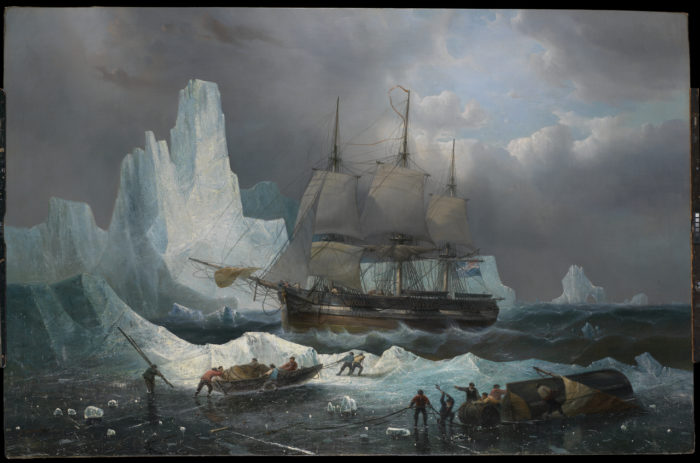News and Updates
Contact
Faculty of Social Science
Social Science Centre
Room 9438
Western University
T. 519-661-2053
F. 519-661-3868
E. social-science@uwo.ca
Study questions role of lead in Franklin Expedition deaths
August 28, 2018
A team of investigators from across Canada, including Andrew Nelson, Professor in the Department of Anthropology and two other Western researchers, have raised serious doubt about the popular belief that lead poisoning played a role in the death of members of the famed Franklin Expedition. The study, Franklin expedition lead exposure: New insights from high resolution confocal x-ray fluorescence imaging of skeletal microstructure, was published today in PLOS ONE.
In the summer of 1845, under the command of Sir John Franklin, 128 officers and crew aboard the ships HMS Erebus and HMS Terror entered the waters of Arctic North America with the goal of completing the discovery of the Northwest Passage. Franklin and his crew spent the first winter at Beechey Island, where three crewmen died and were buried.
The following year the ships became stranded in ice off King William Island where they remained until April 1848. By this time the crew, now reduced to 105 men, made a desperate attempt to reach the mainland. Sadly, not one individual survived.
Previous analyses of bone, hair, and soft tissue samples from the remains of crew members found that tissues contained elevated lead levels, suggesting that lead poisoning may have been a major contribution to their demise.
However, questions remained regarding the timing and degree of exposure to lead and, ultimately, the extent to which the crew members may have been impacted. To address this historical question, the research team investigated three hypotheses to test the theory that lead poisoning was not the primary cause of the crew’s deaths:
- If elevated lead exposure was experienced by the crew during the expedition, the team hypothesized that those sailors who survived longer (King William Island vs. Beechey Island) would exhibit more extensively distributed lead in their bones;
- The team hypothesized that lead levels would be elevated in bone microstructural features forming at or near the time of death, compared with older tissue in the body; and
- Finally, if lead exposure played a significant role in the failure of the expedition the team hypothesized that bone samples would exhibit evidence of higher or more sustained levels of lead than that of a contemporary British naval 19th-Century naval population from Antigua.
Synchrotron-based high resolution confocal X-ray fluorescence imaging in partnership with scientists at the Canadian Light Source synchrotron at the University of Saskatchewan and the Advanced Photon Source was used to visualize lead distribution within bone and dental structures at the micro scale.
Speaking to CBC London, Nelson said. "Our investigation starts in 2013 when a colleague did an analysis of the bone. Lead was evenly distributed throughout the bone. So, in other words, it wasn't a big shot of lead gotten at the end of life. They were exposed to it throughout their lifetime."
This new research looks at the teeth, as well as the bones and compares them to remains from a naval site in the Caribbean. It also uses much more sophisticated analytical tools, according to Nelson.
The data did not support the first hypothesis as lead distribution within the samples from the two different Franklin sites was similar. Evidence of lead within skeletal microstructural features formed near the time of death lent support to the team’s second hypothesis but consistent evidence of a marked elevation in lead levels was lacking.
Finally, the comparative analysis with the Antigua samples did not support the hypothesis that the Franklin sailors were exposed to an unusually high level of lead compared to navy personnel from the same time period.
Taken all together, the team’s skeletal microstructural results do not support the conclusion that lead played a pivotal role in the loss of Franklin and his crew.
"They (the Franklin crew members) had lead in their bones, no question about that. So did the individuals from the naval site in the Caribbean," said Nelson. "What we're suggesting in the paper is that lead exposure was a function of living in the 1840's. They were drinking out of pewter, eating off pewter plates, using lead as a sweetener, painting things with lead based paints. They were exposed chronically throughout their entire life."
In addition to Western researchers Madalena Kozachuk, Ronald Martin and Andrew Nelson, the team included researchers from MacEwan University, Lakehead University, University of Saskatchewan, Trent University, University of Waterloo and the Canadian Light Source at the University of Saskatchewan,

